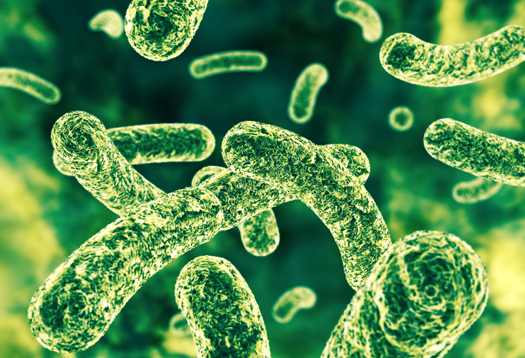
NAFLD has been linked with diabetes, liver cirrhosis, liver fibrosis, and obesity. Like those diseases, it is often caused by a diet that contains large amounts of fat, which ends up accumulating in the liver in what is called steatosis.
Unsurprisingly, NAFLD has been growing more common. Treatments are costly and may take up a long time. Researchers have looked for ways to prevent its onset by treating steatosis before it develops into a full-fledged metabolic syndrome.
The University of Imam Abdulrahman Alfaisal (UIAU) research team investigated the possibility of using probiotics to limit the accumulation of fat in the liver. Probiotics are beneficial bacteria that improve the health of their host.
Some probiotics have been used to reduce obesity and Type 2 diabetes in animal models. Furthermore, they can improve the gut microbiota, helping the latter recover from the effects of the fatty diets that bring about steatosis and NAFLD. (Related: Tea found to prevent fat storage in the liver, lower blood glucose.)
Mixture of different probiotics tested for protecting the liver
The researchers collected young male albino rats. The animals were divided into two groups: A control group and an HFSD group.
The first group of rats received normal food. The second group was given foods that were rich in fat and sucrose. The latter diet would induce hepatic steatosis in the animals.
Starting on the 12th week, half of the HFSD rats were also given a commercially-available probiotic mixture. The supplement consisted of the Lactobacillus acidophilus, Lactobacillus plantarum, and Bifidobacterium bifidum strains. It also included the fermentation extracts for Bacillus subtilis and Aspergillus oryzae strains.
Every week, the body weights of each animal would be recorded. The data was used to calculate mean body weights and weight gains over the course of the experiment.
The trial lasted for 16 weeks. All rats were euthanized at the end. Blood and liver tissue samples were collected from the animals.
The blood was analyzed for lipid profiles and hepatic function – the presence of alanine aminotransferase (ALT), albumin, and bilirubin. Researchers also measured the levels of inflammatory markers – the hormones leptin and resistin, and the cytokines TNF-? and IL-6 – present in the adipose tissue.
The liver tissues were inspected for the shape and structure of the liver cells, the number of inflammatory cells present, the presence of fat globules between and within liver cells, and any degeneration of those cells.
Probiotics can reduce the effects of steatosis and prevent the onset of NAFLD
The UIAU researchers reported that the probiotic mixture protected the mice of the third group from the adverse effect of their fat-rich food. The probiotic-treated animals enjoyed improved lipid profiles in the blood and liver, healthier levels of leptin and resistin hormones, and lower TNF-? and IL-6 levels than the HFSD-only rats.
The probiotic group did not show any of the signs that characterized hepatosteatosis and NAFLD. They did not display vastly increased body mass, irregularly shaped liver cells, cellular damage or necrosis, or the like.
The researchers believed that probiotic formulas could serve as a therapeutic and nutritional treatment for liver steatosis and NAFLD. In a similar vein as to how fatty foods can affect the gut microbiota, boosting the population of good bacteria can reverse the damaging effects of HFSD on the liver.
Further research on this approach would need to determine the optimal probiotic strains, doses, and treatments for treating non-alcoholic fatty liver disease in humans.
Find out more about the curative powers of probiotics at Cures.news.
Sources include:
BMCComplementAlternMed.BioMedCentral.com
Please contact us for more information.























